The rich and captivating world of Celtic mythology has had a profound influence on modern culture in ways that may not always be immediately apparent. From ancient tales of gods and heroes to enchanting mythical creatures, Celtic mythology has served as a wellspring of inspiration for literature, film, art, music, and even fashion. The enduring allure of Celtic mythology lies in its ability to transport us to a realm of magic and wonder, where ancient traditions intertwine with contemporary sensibilities. In this article, we delve into the origins of Celtic mythology, explore its characters and creatures, examine its influence on various forms of art and media, and uncover the lasting impact it has had on pop culture. Join us on a journey through the realms of myth and legend, where the ancient Celtic tales continue to shape and enchant the modern world.
Contents
- The Origins of Celtic Mythology
- Celtic Mythological Characters and Creatures
- Influence of Celtic Mythology on Modern Literature
- Celtic Mythology in Film and Television
- Celtic Mythology in Popular Music
- The Celtic Mythological Aesthetic in Art and Design
- The Influence of Celtic Mythology on Pop Culture
- Conclusion
-
Frequently Asked Questions
- What regions were inhabited by the Celts?
- Who were the important gods and goddesses in Celtic mythology?
- What are some famous Celtic myths and legends?
- How did Celtic mythology influence contemporary literature?
- What role does Celtic mythology play in film and television?
- Which musicians and bands have been influenced by Celtic mythology?
- What are some examples of Celtic art styles and techniques?
- How does Celtic mythology influence video game storytelling?
- What is the significance of Celtic symbolism in jewelry?
- How has Celtic mythology influenced fashion trends?
- References
-
Frequently Asked Questions
- 1. How did Celtic mythology influence modern literature?
- 2. What are some examples of Celtic gods and deities that appear in modern culture?
- 3. How has Celtic mythology influenced the world of film and television?
- 4. Are there any musical references to Celtic mythology in popular music?
- 5. How has Celtic mythology influenced art and design?
- 6. In what ways has Celtic mythology influenced popular culture beyond literature and art?
- 7. Are there any specific fashion trends or jewelry inspired by Celtic mythology?
- 8. Can you provide examples of Celtic music festivals and revivals?
- 9. How have modern role-playing games incorporated Celtic themes?
- 10. What sets Celtic mythology apart from other mythological systems?
- References
- Read More
The Origins of Celtic Mythology
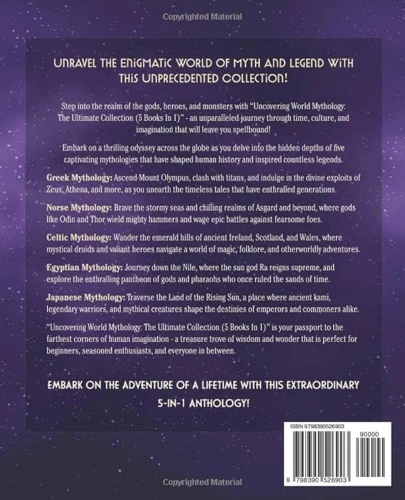
Celtic mythology has its roots in the beliefs and traditions of the Celtic people, who inhabited parts of Europe in ancient times. The Celts were a diverse group of tribes with a shared culture and language, and their mythology was shaped by their interactions with the natural world. They believed in a pantheon of powerful deities, such as Dagda the god of abundance and Morrigan the goddess of war, who played prominent roles in their religious practices and folklore. The mythology of the Celts evolved over time as they came into contact with other cultures and underwent social and political changes. From the early Celtic Bronze Age to the Iron Age and beyond, Celtic mythology continued to develop and adapt, intertwining with local traditions and leaving an indelible mark on the cultural landscape. Understanding the origins of Celtic mythology allows us to appreciate the deep roots and significance of the stories and characters that continue to captivate us today.
The Celts and Their Beliefs
The Celts, a diverse group of tribes that inhabited parts of Europe, had a rich and complex belief system that shaped their worldview and influenced their mythology. At the core of their beliefs was a deep reverence for nature and the natural world. The Celts believed that everything in nature, from the trees and rivers to the animals and celestial bodies, possessed a spirit or divine essence. This animistic belief system led to a deep connection with the land and a close observation of the cycles of nature.
The Celts also believed in a pantheon of gods and goddesses who controlled various aspects of life and the natural world. These deities were often associated with specific elements or forces of nature, such as Cernunnos, the god of the forest and the hunt, and Brigid, the goddess of hearth and fire. Each deity had their own attributes and attributes of power, and the Celts would offer prayers and make offerings to seek their favor and protection.
Rituals and ceremonies played a significant role in Celtic religious practices. These rituals were performed by druids, the religious leaders and intellectuals of Celtic society. The druids acted as intermediaries between the mortal and divine realms, channeling the power of the gods and performing important ceremonies, such as fertility rituals, harvest celebrations, and rites of passage.
Symbols and sacred sites were also integral to Celtic beliefs. The Celts often used intricate designs known as Celtic knots, which symbolized the interconnectedness of all things. These symbols were commonly found in their art, jewelry, and religious artifacts. Additionally, certain natural sites, such as rivers, springs, and ancient stone circles, were considered sacred and were believed to hold spiritual significance.
The Celtic belief system not only influenced their mythology but also shaped their daily lives, social structure, and even their approach to warfare. Understanding the beliefs of the Celts allows us to gain insights into the values and perspectives of this ancient culture and provides a deeper appreciation for the mythological tales that emerged from their collective imagination. To explore further, read our article on the impact of asteroids and comets on Earth’s history.
Timeline of Celtic Mythological Development
Celtic mythology has a rich and intricate timeline of development, spanning thousands of years. The earliest evidence of Celtic mythology can be traced back to the Bronze Age, with the earliest inscriptions and artifacts depicting deities and symbols associated with Celtic religious practices. During the Iron Age, Celtic mythology began to merge with other belief systems and underwent significant transformations. The influence of the Roman Empire brought elements of Roman mythology and religion into Celtic culture, resulting in a syncretic blend of deities and stories. With the arrival of Christianity in the early medieval period, Celtic mythology faced challenges as it interacted with the new religious teachings. However, rather than disappearing entirely, elements of Celtic mythology were incorporated into Christian practices, resulting in unique traditions such as the Celtic saints and the intertwining of Christian and pagan beliefs. In the modern era, there has been a resurgence of interest in Celtic mythology, fueled by archaeological discoveries, scholarly research, and a growing appreciation for Celtic culture and heritage. The timeline of Celtic mythological development reflects the ever-evolving nature of human beliefs and the enduring power of these ancient stories to captivate and inspire us today.
Celtic Mythological Characters and Creatures
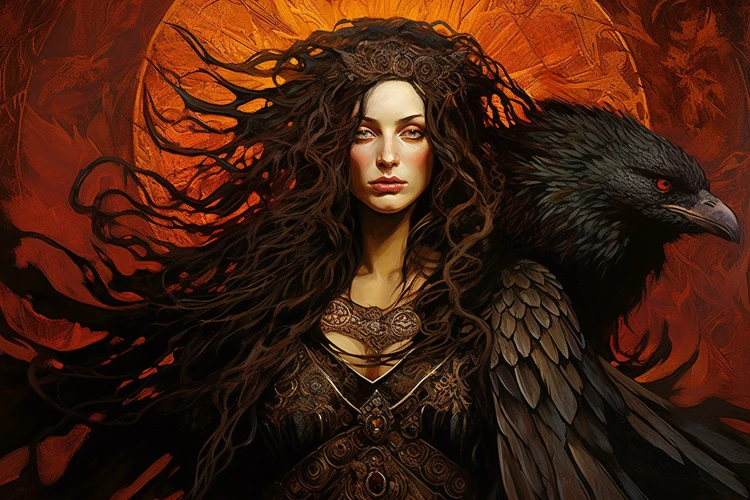
Celtic mythology is brimming with a diverse array of captivating characters and mythical creatures that have left an indelible mark on both ancient and modern culture. The pantheon of Celtic deities includes powerful figures such as Brigid, the goddess of fertility, Lugh, the god of light and craftsmanship, and Cernunnos, the god of the wilderness and animals. These gods and goddesses, with their unique attributes and stories, embody the core values and beliefs of the Celtic people. In addition to the gods, Celtic mythology is teeming with heroic figures like Cú Chulainn, known for his extraordinary strength and fierce loyalty, and Fionn mac Cumhaill, a legendary warrior and leader of the Fianna. Alongside these legendary heroes, mythical creatures such as The Banshee, The Púca, and The Kelpie add an element of enchantment and mystery to the Celtic mythological tapestry. From warrior queens to shape-shifting spirits, these characters and creatures continue to captivate our imaginations and inspire countless stories and artistic interpretations.
1. Deities and Gods
In Celtic mythology, the pantheon of deities and gods holds a central role. These divine beings were revered and worshipped by the Celtic people, embodying various aspects of nature, power, and wisdom. Among the most prominent deities was Dagda, also known as the “Good God,” who symbolized abundance, fertility, and strength. He was often depicted as a wise and powerful figure, wielding a magical club that could both kill and restore life. Another significant deity was Morrigan, the goddess associated with war and fate. She possessed the ability to shape-shift into the form of a crow, and her appearance on the battlefield was seen as both an omen and a source of inspiration for warriors. Lugh, known as the “Many-Skilled,” was revered as the god of craftsmanship, war, and arts. He was associated with the sun and was said to possess incredible skills in various domains. Other notable deities include Cernunnos, the god of fertility and the forest, and Brigid, the goddess of fire, poetry, and healing. These divine figures played a vital role in Celtic mythology, and their stories and attributes influenced the beliefs and values of the Celtic people.
2. Heroic Figures
2. Heroic Figures:
In Celtic mythology, heroic figures play a central role in many tales and legends. These individuals possess extraordinary bravery, strength, and skill, and often embark on quests or engage in epic battles. One prominent heroic figure is Cú Chulainn, a legendary Irish warrior known for his superhuman feats and fierce loyalty. Cú Chulainn’s story is filled with daring exploits, including his famous single-handed defense of Ulster against the armies of Connacht. Another notable heroic figure is Fionn mac Cumhaill, also known as Finn McCool, a legendary Irish warrior and leader of the Fianna. Fionn mac Cumhaill is associated with wisdom, hunting, and storytelling, and his tales often involve encounters with mythical creatures and supernatural challenges. He is best known for his pursuit of wisdom and his encounters with the wise salmon of knowledge. The heroic figures of Celtic mythology inspire us with their courage and determination, serving as idealized embodiments of noble virtues. Their stories continue to captivate audiences and serve as a reminder of the enduring power of heroism and the human spirit.
3. Mythical Creatures
In Celtic mythology, mythical creatures play a significant role in the enchanting tales and legends. These creatures are often depicted as otherworldly beings, embodying both beauty and danger. One such creature is the Selkie, a creature that can transform from seal to human form. Selkies are said to possess a captivating allure, and their stories often revolve around themes of love and loss. Another intriguing mythical creature is the Púca, a shape-shifting creature known for its mischievous nature. Púcas can take various forms, from a horse to a hare, and are believed to bring both good and bad fortune. The Banshee, or “bean sídhe,” is a female spirit associated with foretelling death. This supernatural being is often described as a figure with long hair and a mournful cry that signals an impending demise. The Gwyllion, on the other hand, are malevolent spirits that dwell in the mountains of Wales, tricking and leading travelers astray. These mythical creatures add an air of mystery and wonder to Celtic mythology, enriching the cultural tapestry with their captivating presence. To explore more about mythical creatures, you can read about the Legend of the White Snake, a fascinating Chinese myth that also features mystical creatures.
Influence of Celtic Mythology on Modern Literature
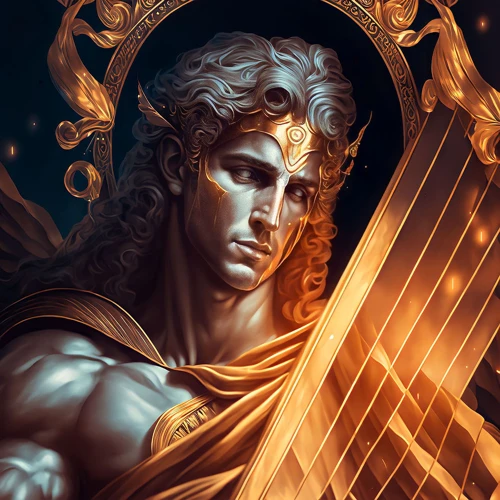
Celtic mythology has left an indelible mark on modern literature, permeating countless works of fiction with its enchanting tales and timeless themes. Authors have reimagined and retold Celtic myths, breathing new life into ancient stories and characters. One of the most notable examples is J.R.R. Tolkien, whose epic fantasy The Lord of the Rings draws heavily from Celtic mythology, particularly in its portrayal of brave heroes on a quest to protect their land from dark forces. Celtic mythology also serves as a wellspring for archetypal motifs and symbolism in literature. The quest for self-discovery, the battle between light and darkness, and the interconnectedness of humans and nature are all themes that find their roots in Celtic mythology. Authors such as Marion Zimmer Bradley and Patricia Kennealy-Morrison have incorporated these motifs into their works, creating narratives that resonate with readers on a profound level. The intertextuality and allusions present in modern literature reflect the enduring influence of Celtic mythology, ensuring that its magic and wisdom continue to captivate readers in the present day.
1. Reimagined Tales and Retellings
In the realm of literature, Celtic mythology has left an indelible mark through the reimagining and retelling of ancient tales. Many authors have found inspiration in the rich tapestry of Celtic mythology, crafting new narratives that breathe fresh life into age-old stories. One example is Morgan Llywelyn’s novel “Bard: The Odyssey of the Irish,” which reimagines the epic journey of the Irish hero Taliesin through ancient Ireland. Through her vivid prose, Llywelyn transports readers to a world where mythical creatures and ancient Celtic deities roam. Similarly, Marion Zimmer Bradley’s novel “The Mists of Avalon” presents a reinterpretation of the Arthurian legend from the perspective of powerful Celtic priestesses. These reimagined tales not only introduce Celtic mythology to a wider audience but also offer a fresh perspective on familiar stories, highlighting the enduring relevance and appeal of Celtic mythological themes. The popularity of these works demonstrates the timeless allure of Celtic mythology and its ability to inspire and captivate readers across generations.
2. Archetypal Motifs and Symbolism
Archetypal motifs and symbolism are prevalent themes in Celtic mythology, and they have had a profound impact on modern literature and storytelling. The ancient Celts relied heavily on symbolism to convey deeper meanings and truths within their myths and legends. These symbols often represented universal concepts such as love, bravery, wisdom, or the balance of nature. One prominent archetype in Celtic mythology is the hero’s journey, a narrative pattern that follows a protagonist’s transformative quest. This archetype can be seen in countless modern works of literature, from J.R.R. Tolkien’s “The Lord of the Rings” to the Harry Potter series by J.K. Rowling. The notion of good versus evil is another archetypal motif that resonates throughout Celtic mythology and is a fundamental theme in modern storytelling. The hero’s quest to overcome darkness and restore balance is a timeless and universal concept that captivates audiences across cultures and generations. The symbolism found in Celtic mythology continues to permeate contemporary literature, providing authors with a rich tapestry of imagery and themes to draw upon, allowing readers to explore and connect with deeper aspects of the human experience.
3. Intertextuality and Allusions
Intertextuality and allusions play a significant role in the influence of Celtic mythology on modern literature. Authors often incorporate references to Celtic myths, characters, and symbols in their works, creating a web of interconnected stories that enrich the narrative and add layers of meaning. This technique allows writers to tap into the depth and richness of Celtic mythology and utilize its archetypal motifs in new and creative ways. These allusions can range from subtle nods to direct retellings of ancient tales, serving to deepen the reader’s engagement and provide a sense of familiarity. For example, J.R.R. Tolkien’s renowned fantasy epic, “The Lord of the Rings,” draws heavily on Celtic mythology, with its narrative structure, themes of heroism, and the presence of mythical creatures reflecting the influence of Celtic folklore. By weaving Celtic influences into their writing, authors not only pay homage to a rich cultural heritage but also contribute to the ongoing tradition of storytelling and allow Celtic mythology to continue shaping our literary landscape.
Celtic Mythology in Film and Television
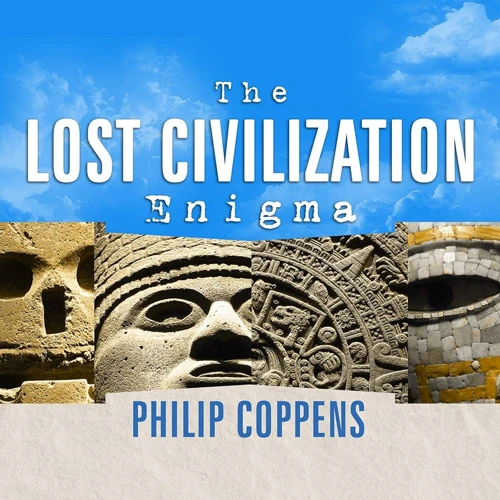
Celtic mythology has left an indelible mark on the world of film and television, captivating audiences with its rich tapestry of legends and enchanting characters. Cinematic adaptations of Celtic legends, such as the epic tale of King Arthur and the Knights of the Round Table, have graced the silver screen, bringing to life the valiant heroes, mystical realms, and intricate plots that have captured the imagination for centuries. These adaptations serve as a testament to the enduring appeal of Celtic mythology, providing a platform for modern storytelling while paying homage to the ancient tales that inspired them. Beyond direct adaptations, the influence of Celtic mythology can also be seen in the fantasy and sci-fi genres, where elements such as magical creatures, mystical landscapes, and the battle between light and dark draw inspiration from Celtic folklore. Visual storytelling allows artists and filmmakers to recreate the atmospheric and mystical beauty of Celtic mythology, transporting audiences to a realm where reality and fantasy intertwine. As we continue to be captivated by the allure of Celtic mythological themes on the screen, we are reminded of the timeless power of these ancient tales and their ability to transport us to worlds beyond our own.
1. Cinematic Adaptations of Celtic Legends
Cinematic adaptations of Celtic legends have brought the enthralling tales of Celtic mythology to life on the silver screen. Filmmakers have drawn inspiration from ancient Celtic folklore to create visually stunning and captivating movies that transport audiences into magical realms populated by gods, heroes, and mythical creatures. One notable example is the 1999 film “The Mists of Avalon,” based on Marion Zimmer Bradley’s novel, which explores the Arthurian legends from a Celtic perspective. The film showcases the conflict between the old Celtic religion and the rising influence of Christianity, weaving together elements of Celtic mythology and Arthurian lore. Another notable adaptation is the animated film “The Secret of Kells” (2009), which incorporates Celtic artistry and mythology within its beautiful hand-drawn animation. The film tells the story of a young boy who embarks on a magical quest to complete the Book of Kells, an illuminated manuscript from medieval Ireland, and features enchanting Celtic symbols and imagery. These cinematic adaptations not only entertain audiences but also serve to preserve and revive the rich tapestry of Celtic mythology, introducing new generations to the wonders of this ancient folklore.
2. Fantasy and Sci-Fi Influences
The influence of Celtic mythology on modern culture extends beyond literature and extends into the realms of fantasy and science fiction. Through their captivating tales of magic and otherworldly beings, Celtic mythology has inspired countless authors and filmmakers in the creation of fantastical worlds and epic sagas. The elements of Celtic mythology, such as the mystical realms, heroic quests, and the battle between good and evil, serve as foundations for many fantasy and sci-fi narratives. The iconic works of authors like J.R.R. Tolkien, who drew inspiration from Celtic myth in his creation of Middle-earth, showcase the enduring impact of Celtic mythology on the genre.
In fantasy literature, Celtic mythological motifs are often found in the portrayal of magical creatures and the use of ancient prophecies and powerful artifacts. The idea of parallel worlds or hidden realms, reminiscent of Tir na nÓg or the Land of the Sidhe, are common tropes within fantasy stories. Additionally, the archetypes of the noble warrior and the wise wizard, present in Celtic mythology, are frequently seen in the protagonists of fantasy novels, such as in the iconic character of Gandalf from Tolkien’s “The Lord of the Rings.”
In the realm of science fiction, Celtic mythology serves as a source of inspiration for world-building and the creation of alien cultures. The rich lore and symbolism found in Celtic myth provide a framework for constructing complex societies and belief systems within futuristic settings. Science fiction authors draw from Celtic mythology to explore themes of identity, destiny, and the clash between tradition and progress.
The influence of Celtic mythology can be seen in popular franchises such as “Game of Thrones,” where the complex political intrigue and moral ambiguity parallel the Celtic sagas of old. The magical world of “Harry Potter,” with its creatures such as the fey-like fairies and centaurs, draws upon the mystical elements found within Celtic mythology. Even in science fiction films like “Star Wars,” there are echoes of the ancient Celtic concept of the hero’s journey and the battle between light and dark forces.
The fantasy and science fiction genres owe a significant debt to Celtic mythology for their themes, characters, and world-building. The enduring allure of Celtic mythology continues to inspire authors and filmmakers to create imaginative stories that transport us to other realms and challenge our perceptions of reality. By infusing their works with the spirit of Celtic mythology, these creators pay homage to the ancient tales that continue to captivate audiences to this day.
3. The Celtic Aesthetic in Visual Storytelling
Visual storytelling, especially in the realm of film and television, has been greatly influenced by the Celtic aesthetic. The Celtic culture, with its mystical and enchanting qualities, has provided a rich tapestry for filmmakers and directors to draw upon. One notable example is the fantasy epic The Lord of the Rings trilogy, directed by Peter Jackson. The sweeping landscapes of Middle-earth, with its lush forests, towering mountains, and mystical creatures, capture the essence of the Celtic aesthetic. The use of intricate Celtic knotwork designs in the film’s costumes and set designs further enhances this connection. Another film that draws inspiration from Celtic mythology is Braveheart, directed by Mel Gibson. Set in medieval Scotland, the film incorporates elements of Celtic folklore and legends to create a visually stunning and culturally immersive experience. In the realm of television, the popular series Game of Thrones takes cues from Celtic mythology in its portrayal of a world filled with political intrigue and mythical creatures. The use of ancient symbols and motifs, as well as the incorporation of Celtic-inspired languages, adds depth to the show’s visual storytelling. The Celtic aesthetic continues to influence visual storytelling, providing a sense of mystery, magic, and timeless beauty to the worlds created on screen.
Celtic Mythology in Popular Music
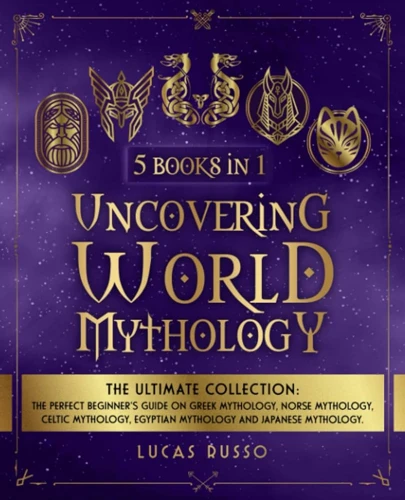
Celtic mythology has found its way into the realm of popular music, where artists draw inspiration from the enchanting tales and mystical imagery. Through mythical references in song lyrics, musicians transport listeners to otherworldly landscapes, infusing their music with a touch of magic. Artists like Loreena McKennitt, known for her ethereal interpretations of Celtic folklore, and Enya, who weaves her enchanting melodies with Celtic influences, have created beautiful musical journeys rooted in the mythology of the Celts. The resonant themes of love, nature, and mysticism found in Celtic mythos provide musicians with a rich source of inspiration, adding a certain timeless quality to their compositions. As listeners are immersed in the melodies and lyrics, they are transported to a realm where ancient tales come to life through the power of music. Explore the captivating blend of Celtic mythology and music, and let the melodies whisk you away to a world of wonder and imagination.
1. Mythical References in Song Lyrics
In the realm of music, Celtic mythology has left an undeniable imprint on song lyrics. Many songwriters and musicians draw inspiration from the captivating tales and enchanting characters of Celtic folklore. These mythical references can be found in a diverse range of genres, from traditional folk music to contemporary rock and pop. Celtic mythology offers a wealth of symbolism and imagery that songwriters utilize to infuse their lyrics with depth and meaning. For example, songs may allude to the great Celtic hero Cú Chulainn and his warrior prowess, or the mystical land of Tír na nÓg, the “Land of Eternal Youth.” Artists incorporate these mythological elements to evoke a sense of wonder, fantasy, and a connection to ancient traditions. They often explore themes of love, adventure, nature, and the trials and triumphs of human existence through the lens of Celtic mythology. Whether it’s a haunting ballad or an energetic anthem, mythical references in song lyrics add a layer of mysticism and cultural richness to the musical landscape. This incorporation of Celtic mythology into songwriting serves as a homage to the ancient tales and keeps the spirit of the Celts alive in contemporary music. To discover some examples of modern songs that incorporate mythical references, you can check out artists like Loreena McKennitt with her song “The Mummer’s Dance,” which alludes to medieval Celtic folklore, or the band Clannad and their track “I Will Find You,” featured in the film “The Last of the Mohicans.” These songs showcase the enduring allure of Celtic mythology in the realm of music.
2. Bands and Artists with Celtic Influences
Bands and artists that draw inspiration from Celtic influences have made a significant impact on the music scene, infusing their work with the enchanting melodies, rhythms, and themes of Celtic mythology. One such notable band is The Waterboys, a British-Irish group led by Mike Scott, whose music incorporates elements of Celtic folk and rock. Their iconic album “Fisherman’s Blues” showcases their fusion of traditional Celtic sounds with a contemporary twist. Another band worth mentioning is Flogging Molly, an American Celtic punk band that blends the raw energy of punk rock with traditional Irish instruments like the fiddle and accordion. With songs like “Drunken Lullabies” and “Float,” Flogging Molly combines the rebellious spirit of punk with Celtic storytelling. Additionally, Loreena McKennitt, a Canadian singer-songwriter, weaves together Celtic and Middle Eastern influences in her ethereal compositions. Her album “The Mask and Mirror” beautifully combines Celtic harp melodies with exotic instrumentation, creating a unique musical tapestry. These examples highlight how bands and artists embrace Celtic influences and incorporate them into their music, creating a diverse and vibrant Celtic music scene.
3. Celtic Music Revivals and Festivals
Celtic music has experienced a remarkable revival in recent decades, with festivals dedicated to celebrating this vibrant genre gaining popularity around the world. Celtic music festivals provide a platform for both established and emerging artists to showcase their talents and share the enchanting melodies and rhythms of Celtic music with a wider audience. These festivals often feature performances by renowned musicians specializing in Celtic music, bringing together traditional instruments such as the tin whistle, fiddle, bodhran, and bagpipes to create an authentic and immersive musical experience. Some notable Celtic music festivals include the Edinburgh Festival in Scotland, the Milwaukee Irish Fest in the United States, and the Feis Ceoil in Ireland. These gatherings not only showcase the best of Celtic music but also provide a space for cultural exchange, workshops, and collaborations among musicians from different countries and backgrounds. Through these revivals and festivals, Celtic music continues to thrive and evolve, captivating audiences and keeping this cherished tradition alive for future generations to appreciate and enjoy.
The Celtic Mythological Aesthetic in Art and Design
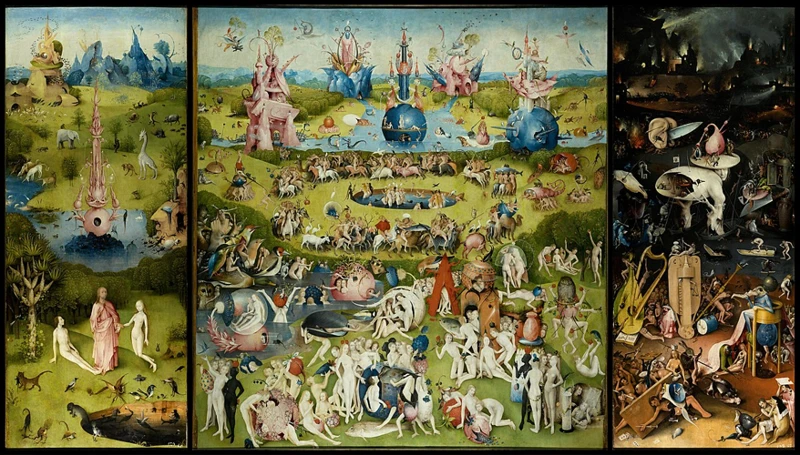
The intricate and mesmerizing patterns of Celtic knotwork, along with other symbolic motifs, have left an indelible impression on the world of art and design. The Celtic mythological aesthetic encompasses both traditional and contemporary interpretations, showcasing the rich heritage and timeless allure of Celtic culture. Traditional Celtic art styles, characterized by interwoven lines and intricate geometric shapes, have been incorporated into various mediums, including pottery, sculpture, and tapestries. These designs often draw inspiration from Celtic mythological figures and stories, adding a layer of storytelling to the visual representation. Additionally, contemporary artists and designers have adapted and reimagined Celtic motifs, incorporating them into jewelry, clothing, and even tattoos. The Celtic mythological aesthetic is a testament to the enduring beauty and significance of Celtic mythology in the realm of art and design. It continues to captivate and inspire individuals, keeping the traditions and stories of the Celts alive through creative expression.
1. Traditional Celtic Art Styles and Techniques
Traditional Celtic art is renowned for its intricate designs, which are characterized by their swirling patterns, interlacing knots, and symmetrical motifs. These art styles and techniques have a rich history that spans centuries. One of the most well-known forms of Celtic art is Celtic knotwork, which consists of interwoven lines that form elaborate patterns. These knots often symbolize the interconnectedness of life, nature, and spiritual beliefs. Another prevalent technique in Celtic art is illumination, where intricate designs are painted or drawn on manuscripts, often using vibrant colors and fine details. The Book of Kells is a prime example of Celtic illumination, showcasing ornate and meticulously crafted illustrations that accompany religious texts. Additionally, celtic metalwork is highly regarded for its craftsmanship and intricate designs. Metal objects such as Tara brooches and Ardagh Chalice feature elaborate engravings and intricate detailing, showcasing the skill and artistry of Celtic artisans. The use of symbols in Celtic art is also prevalent, with motifs like the triskele (a triple spiral), the celtic cross, and the tree of life being widely represented. These symbols hold deep significance and are often associated with spirituality and connection to nature. Traditional Celtic art styles and techniques continue to inspire contemporary artists, who incorporate elements of Celtic design into various mediums, including painting, jewelry-making, and even tattoo artistry. This enduring legacy speaks to the timeless beauty and cultural impact of traditional Celtic art.
2. Celtic Knotwork and Symbolic Motifs
Celtic knotwork and symbolic motifs are some of the most recognizable aspects of Celtic mythology in art and design. The intricate interlaced patterns of Celtic knots have been used for centuries to adorn manuscripts, jewelry, and architecture, and they continue to be popular today. These mesmerizing designs often feature no beginning or end, representing infinity and the interconnectedness of all things. The knots themselves are symbolic, with different patterns carrying different meanings. For example, the triquetra symbolizes the Triple Goddess in Celtic mythology, while the shield knot is believed to offer protection against evil spirits. These symbolic motifs not only pay homage to Celtic mythology but also serve as personal talismans and expressions of cultural heritage. In modern design, artists and craftsmen have incorporated Celtic knotwork into various mediums, including clothing, tattoos, and home decor, allowing individuals to incorporate a touch of mysticism and beauty into their lives. Whether as a delicate necklace or an intricate tapestry, the allure of Celtic knotwork and symbolic motifs endures, bridging the gap between ancient traditions and contemporary aesthetics. For examples of Celtic knotwork in modern design, you can visit this link.
3. Contemporary Adaptations in Design
Contemporary adaptations of Celtic mythology in design have become increasingly popular in recent years. Designers and artists have been captivated by the intricate patterns and symbolic motifs found in traditional Celtic art, and have found ways to incorporate them into modern design practices. One example of this is the use of Celtic knotwork in various forms of design, such as jewelry, textile patterns, and even furniture. The interwoven patterns of Celtic knotwork symbolize the interconnectedness of life and the eternal nature of the divine. These designs can be seen adorning everything from clothing and accessories to home decor items. Additionally, contemporary adaptations of Celtic mythology often draw inspiration from the natural world, incorporating elements such as trees, animals, and mystical creatures into their designs. This not only pays homage to the ancient Celtic belief in the sacredness of nature but also adds a touch of enchantment and mystery to modern designs. From tattoos to logo designs, the influence of Celtic mythology can be seen in a wide range of contemporary design mediums, bringing a sense of timeless beauty and cultural connection to the modern world.
The Influence of Celtic Mythology on Pop Culture
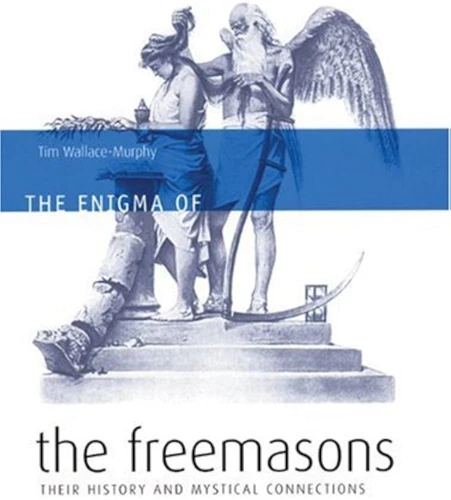
The influence of Celtic mythology on pop culture cannot be overstated. From video games to fashion and jewelry, Celtic mythology has found its way into various aspects of modern life. In the realm of video games, titles such as “The Witcher 3: Wild Hunt” and “God of War” draw heavily on Celtic mythology for their immersive storylines and game worlds. Role-playing games, in particular, have embraced Celtic themes, allowing players to embark on epic quests inspired by the ancient tales of heroes and mystical creatures. Celtic influences can also be seen in fashion and jewelry, where intricate Celtic knotwork designs and symbolic motifs adorn clothing, accessories, and even tattoo art. The allure of Celtic mythology lies in its ability to evoke a sense of mysticism and enchantment, making it a timeless source of inspiration for pop culture creators and enthusiasts alike. Whether in the virtual worlds of gaming or the vibrant tapestry of fashion, Celtic mythology continues to captivate and leave its mark on the ever-evolving landscape of pop culture.
1. Celtic Mythology in Video Games
Celtic mythology has found its way into the immersive realms of video games, where players can embark on epic quests inspired by the rich tapestry of Celtic folklore. Many game developers draw upon Celtic mythology to create captivating narratives and unique game worlds. One popular example is “The Witcher” series, which weaves Celtic-inspired themes, creatures, and symbols into its gameplay and storytelling. Players encounter mythical beings like The Wild Hunt, a group of spectral riders from Celtic folklore, as they navigate the world of the game. Another notable example is “God of War,” where players encounter Celtic deities and creatures as they venture through the realms of Norse mythology. Games like “Fenrir’s Legacy” and “Song of Saya” feature direct adaptations of Celtic mythological characters and stories, allowing players to immerse themselves in the ancient tales. The incorporation of Celtic mythology in video games provides an interactive platform for individuals to engage with these ancient stories, breathing new life into the age-old traditions and captivating a new generation of players with their profound lore and fantastical elements.
2. Role-playing Games and Celtic Themes
Role-playing games (RPGs) have always drawn inspiration from a multitude of sources, and Celtic mythology is no exception. In the realm of RPGs, Celtic themes are often incorporated to create immersive and fantastical worlds for players to explore. These games often feature Celtic-inspired settings, characters, and storylines, allowing players to dive into a world steeped in the rich mythology and folklore of ancient Celtic cultures. From the misty landscapes of Avalon to the mystical realms of Tir Na Nog, RPGs transport players to realms where magic and adventure await at every turn.
One popular RPG series that incorporates Celtic themes is The Elder Scrolls, developed by Bethesda Game Studios. The game world of Tamriel, featured in titles such as Morrowind, Oblivion, and Skyrim, includes numerous nods to Celtic mythology. Players encounter ancient ruins, mystical artifacts, and stories woven with Celtic-inspired elements. The game’s lore draws upon the mythical creatures and deities of Celtic mythology, allowing players to interact with and explore a world rich in Celtic influences.
Another notable RPG that embraces Celtic themes is Pillars of Eternity, developed by Obsidian Entertainment. Set in the fictional world of Eora, the game draws inspiration from a variety of real-world mythologies, including Celtic mythology. Players encounter mystical creatures such as druids and animancers, explore ancient ruins, and navigate complex storylines rooted in Celtic folklore. The game’s intricate narrative weaves together themes of fate, rebirth, and the balance between nature and civilization, all of which resonate with Celtic mythology.
One of the key reasons RPGs incorporate Celtic themes is because they add depth and authenticity to the game world. The rich tapestry of Celtic mythology provides a wealth of inspiration for creating compelling narratives, unique characters, and fantastical creatures. The themes of heroism, destiny, and the interplay between the mortal and supernatural realms are all elements that align with the core principles of RPG gameplay.
Role-playing games have embraced Celtic themes as a means of creating immersive and captivating worlds for players to explore. These games draw upon the rich mythology and folklore of Celtic cultures, incorporating elements such as mythical creatures, ancient ruins, and epic quests rooted in Celtic traditions. By infusing RPGs with Celtic inspirations, game developers have added depth, authenticity, and a touch of magic to the gaming experience, inviting players to embark on extraordinary adventures in captivating Celtic-inspired realms.
3. Celtic Mythology in Fashion and Jewelry
3. Celtic Mythology in Fashion and Jewelry
Celtic mythology has made a significant impact on the world of fashion and jewelry, with its intricate symbols and designs being incorporated into modern-day aesthetics. The Celtic knotwork, with its interlacing patterns and endless loops, has become a popular motif in jewelry, representing eternal love, unity, and interconnectedness. Many jewelry pieces such as necklaces, bracelets, and rings feature these elaborate knots, showcasing the Celtic influence on contemporary accessory design.
In addition to the knotwork, other mythological symbols like the triskelion (a three-legged spiral) and the triquetra (a interlocking three-cornered shape) have also found their place in fashion. These symbols are believed to hold deep spiritual significance, representing concepts such as balance, harmony, and the cycles of life. They are often used as decorative elements on clothing, accessories, and even tattoos, serving as a means for individuals to express their connection to Celtic mythology.
The use of precious metals such as silver and gold, which were highly valued by the ancient Celts, adds an element of authenticity and luxury to Celtic-inspired fashion and jewelry. The craftsmanship involved in creating these pieces often pays homage to traditional Celtic techniques, such as filigree and granulation, which require intricate detailing and skill.
Fashion designers and jewelry artisans continue to draw inspiration from Celtic mythology, incorporating its mystical allure into their collections. From high-end couture to accessible street fashion, the influence of Celtic mythology can be seen in various styles and trends. Whether it’s a bold statement piece featuring a Celtic knot pendant or a delicate ring adorned with mythological symbols, the fashion and jewelry industry embraces and celebrates the mystique and beauty of Celtic mythology.
Celtic mythology has left an indelible mark on the realm of fashion and jewelry, bridging the gap between ancient tales and modern-day aesthetics. By adorning themselves with Celtic-inspired pieces, individuals not only express their personal style but also pay homage to a rich cultural heritage that continues to captivate and inspire.
Conclusion
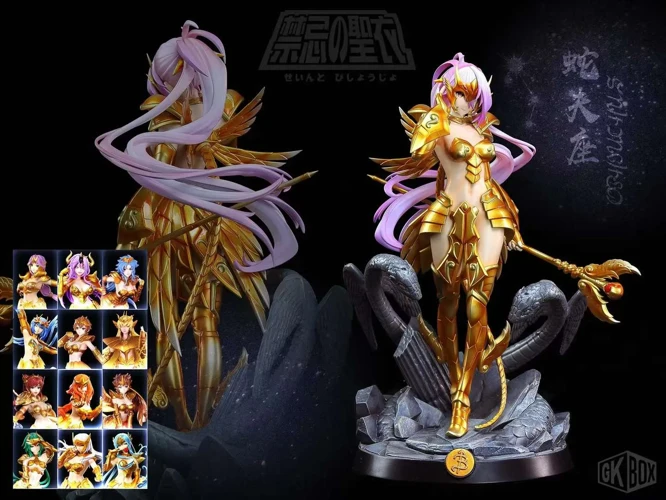
In , it becomes evident that the influence of Celtic mythology on modern culture is vast and far-reaching. From its ancient origins to its continued presence in literature, film, music, art, and even fashion, Celtic mythology captivates and inspires. The tales of gods, heroes, and mythical creatures have become deeply embedded in our collective consciousness, shaping our understanding of the world and providing a rich tapestry of themes and motifs for creative expression. The enduring appeal of Celtic mythology lies in its ability to transport us to a realm where magic and wonder coexist with the complexities of the human experience. Whether through reimagined tales, symbolic motifs, or the infusion of Celtic aesthetics, the myths continue to hold relevance and resonance in the modern world. As we continue to uncover the nuances and intricacies of Celtic mythology, we deepen our appreciation for the diverse tapestry of human culture and the timeless stories that connect us across generations. So let us celebrate and honor the enduring influence of Celtic mythology, as it continues to inspire and enchant us with its timeless tales of gods, heroes, and the magic inherent in our world.
Frequently Asked Questions

What regions were inhabited by the Celts?
The Celtic people inhabited various regions across Europe, including Ireland, Scotland, Wales, Cornwall, Brittany, and parts of modern-day France and Spain.
Who were the important gods and goddesses in Celtic mythology?
Celtic mythology features a diverse pantheon of deities, such as Cernunnos, the horned god of nature, and Brigid, the goddess of healing, poetry, and craftsmanship.
What are some famous Celtic myths and legends?
Some well-known myths and legends from Celtic folklore include the tales of King Arthur and the Knights of the Round Table, the story of the hero Cu Chulainn, and the legend of the selkies – magical seals that can transform into humans.
How did Celtic mythology influence contemporary literature?
Celtic mythology has inspired countless authors, from J.R.R. Tolkien who drew inspiration from Celtic folklore for his Middle-earth stories, to contemporary writers like Patricia Briggs and Kevin Hearne who incorporate Celtic mythological elements into their urban fantasy novels.
What role does Celtic mythology play in film and television?
Celtic mythology has been a source of inspiration for numerous films and TV shows, such as “Merlin,” “Brave,” and “Outlander,” which incorporate Celtic themes, characters, and settings into their storytelling.
Which musicians and bands have been influenced by Celtic mythology?
Artists like Enya, Loreena McKennitt, and Celtic Woman have drawn inspiration from Celtic mythology, creating enchanting music that reflects the mystical and ethereal qualities of the ancient tales.
What are some examples of Celtic art styles and techniques?
Celtic art is characterized by intricate knotwork, spirals, and interlacing patterns. They utilized techniques such as filigree, metalwork, and stone carving to create beautiful and ornate pieces that symbolized their connection to nature and their beliefs.
How does Celtic mythology influence video game storytelling?
Celtic mythology has become a popular source of inspiration for video game creators, with games like “The Witcher 3: Wild Hunt” and “God of War” incorporating Celtic mythological elements into their narratives, adding depth and richness to the gaming experience.
What is the significance of Celtic symbolism in jewelry?
Celtic symbols such as the triquetra, triskele, and Celtic knots hold deep meaning and are often used in jewelry designs. They are believed to represent concepts like eternity, interconnectedness, and spiritual growth.
How has Celtic mythology influenced fashion trends?
Celtic-inspired fashion trends often feature earthy colors, nature-inspired motifs, and elements of Celtic knotwork. Designers like Alexander McQueen and Vivienne Westwood have incorporated Celtic aesthetics into their collections, adding a touch of ancient mysticism to the world of fashion.
References
- What are examples of Celtic myths and traditions in pop …
- Celtic Mythology: Myths, Legends, Deities, Heroes, and …
- INFLUENCE IN SOCIETY
Frequently Asked Questions

1. How did Celtic mythology influence modern literature?
Celtic mythology has had a significant impact on modern literature by inspiring reimagined tales and retellings of ancient Celtic myths and legends. Authors often draw upon the rich Celtic folklore and incorporate archetypal motifs and symbolism in their stories, creating a sense of depth and connection to the ancient past.
2. What are some examples of Celtic gods and deities that appear in modern culture?
Celtic gods and deities such as Brigid, Cernunnos, and Morrigan continue to make appearances in modern culture. These ancient figures often find their way into books, films, and even video games, becoming iconic symbols of Celtic mythology and spirituality.
3. How has Celtic mythology influenced the world of film and television?
The influence of Celtic mythology on film and television can be seen through cinematic adaptations of Celtic legends like “King Arthur” and “The Mabinogion.” Additionally, fantasy and sci-fi genres often draw inspiration from Celtic mythology, incorporating elements of magic, mythological creatures, and mystical landscapes.
4. Are there any musical references to Celtic mythology in popular music?
Absolutely! Many song lyrics make references to Celtic mythology, honoring the ancient tales and heroes. Artists like Loreena McKennitt and Enya have incorporated Celtic themes and melodies into their music, creating a unique sound that resonates with both Celtic mythology enthusiasts and the general audience.
5. How has Celtic mythology influenced art and design?
Celtic mythology has deeply impacted the world of art and design. Traditional Celtic art styles and techniques, such as intricate knotwork and symbolic motifs, continue to inspire contemporary artists and designers. The Celtic aesthetic can be found in various forms of visual art, including paintings, tattoos, and even jewelry.
6. In what ways has Celtic mythology influenced popular culture beyond literature and art?
Aside from literature and art, Celtic mythology has influenced popular culture in various ways. Video games often incorporate Celtic mythological elements, providing players with immersive experiences in Celtic-inspired worlds. Role-playing games also frequently draw upon Celtic themes, creating adventures filled with ancient magic and legendary heroes.
7. Are there any specific fashion trends or jewelry inspired by Celtic mythology?
Indeed, Celtic mythology has left its mark on the fashion industry. Many people adorn themselves with jewelry featuring Celtic symbols and knotwork, representing their connection to the ancient Celtic world. Additionally, Celtic-inspired fashion trends, such as flowing dresses and earthy color palettes, often pay homage to the mystique and beauty of Celtic culture.
8. Can you provide examples of Celtic music festivals and revivals?
Celtic music revivals, festivals, and events take place all over the world, celebrating the influence of Celtic culture on music. The Celtic Colours International Festival in Cape Breton, Nova Scotia, and the Celtic Connections festival in Glasgow, Scotland, are two notable examples of gatherings that showcase the vibrant traditions of Celtic music.
9. How have modern role-playing games incorporated Celtic themes?
Modern role-playing games often incorporate Celtic themes by creating fictional worlds inspired by Celtic mythology. Players can embark on quests and interact with characters and creatures from Celtic folklore, immersing themselves in epic tales and adventures that pay homage to the ancient Celtic culture.
10. What sets Celtic mythology apart from other mythological systems?
Celtic mythology has its own unique characteristics that set it apart from other mythological systems. The Celtic belief in interconnectedness with nature, the emphasis on heroic figures and warrior culture, and the prevalence of magical creatures like fairies and druids contribute to the distinctiveness of Celtic mythology.
References
- Celtic Mythology: Myths, Legends, Deities, Heroes, and …
- The Rise of Irish and Celtic Mythology in Popular Culture







